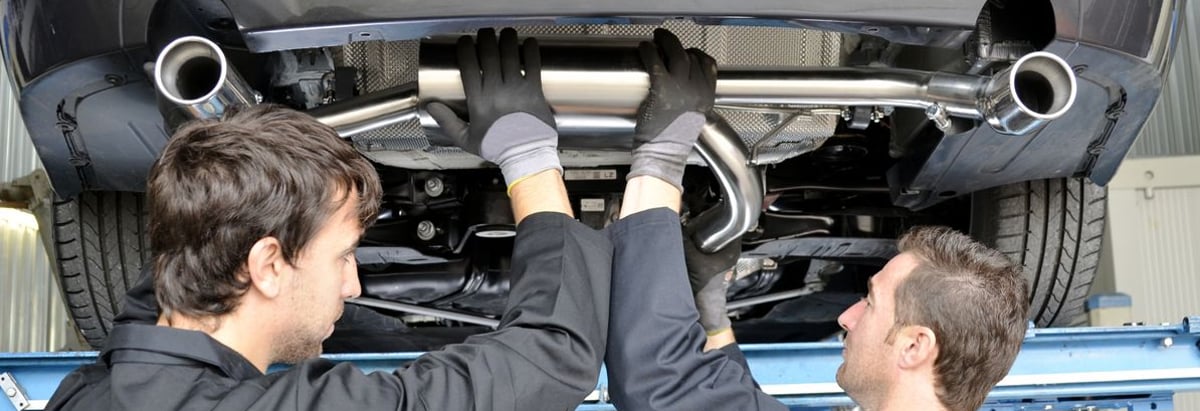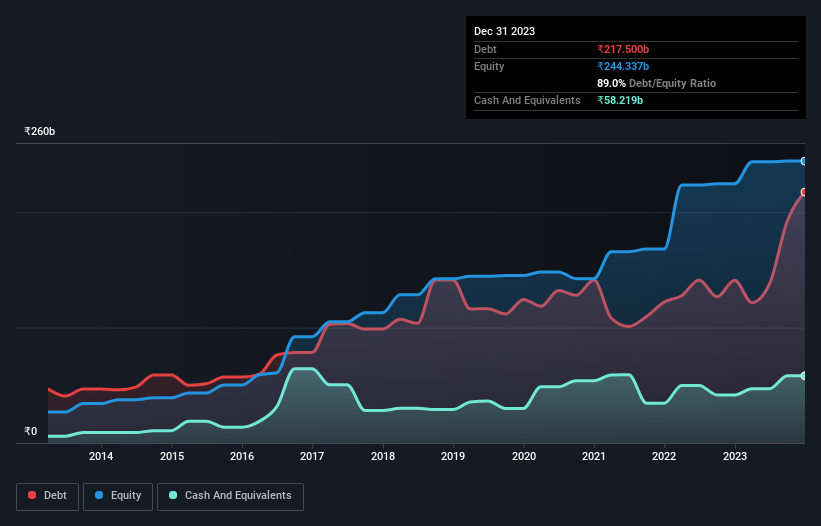- India
- /
- Auto Components
- /
- NSEI:MOTHERSON
Does Samvardhana Motherson International (NSE:MOTHERSON) Have A Healthy Balance Sheet?

Warren Buffett famously said, 'Volatility is far from synonymous with risk.' When we think about how risky a company is, we always like to look at its use of debt, since debt overload can lead to ruin. We note that Samvardhana Motherson International Limited (NSE:MOTHERSON) does have debt on its balance sheet. But should shareholders be worried about its use of debt?
When Is Debt A Problem?
Generally speaking, debt only becomes a real problem when a company can't easily pay it off, either by raising capital or with its own cash flow. If things get really bad, the lenders can take control of the business. However, a more common (but still painful) scenario is that it has to raise new equity capital at a low price, thus permanently diluting shareholders. Of course, the upside of debt is that it often represents cheap capital, especially when it replaces dilution in a company with the ability to reinvest at high rates of return. When we examine debt levels, we first consider both cash and debt levels, together.
See our latest analysis for Samvardhana Motherson International
What Is Samvardhana Motherson International's Debt?
As you can see below, at the end of September 2023, Samvardhana Motherson International had ₹217.5b of debt, up from ₹141.0b a year ago. Click the image for more detail. On the flip side, it has ₹58.2b in cash leading to net debt of about ₹159.3b.

How Strong Is Samvardhana Motherson International's Balance Sheet?
According to the last reported balance sheet, Samvardhana Motherson International had liabilities of ₹391.7b due within 12 months, and liabilities of ₹146.3b due beyond 12 months. Offsetting these obligations, it had cash of ₹58.2b as well as receivables valued at ₹149.5b due within 12 months. So it has liabilities totalling ₹330.3b more than its cash and near-term receivables, combined.
While this might seem like a lot, it is not so bad since Samvardhana Motherson International has a market capitalization of ₹805.7b, and so it could probably strengthen its balance sheet by raising capital if it needed to. However, it is still worthwhile taking a close look at its ability to pay off debt.
We measure a company's debt load relative to its earnings power by looking at its net debt divided by its earnings before interest, tax, depreciation, and amortization (EBITDA) and by calculating how easily its earnings before interest and tax (EBIT) cover its interest expense (interest cover). This way, we consider both the absolute quantum of the debt, as well as the interest rates paid on it.
Samvardhana Motherson International has net debt worth 2.1 times EBITDA, which isn't too much, but its interest cover looks a bit on the low side, with EBIT at only 4.1 times the interest expense. While these numbers do not alarm us, it's worth noting that the cost of the company's debt is having a real impact. Importantly, Samvardhana Motherson International grew its EBIT by 91% over the last twelve months, and that growth will make it easier to handle its debt. The balance sheet is clearly the area to focus on when you are analysing debt. But it is future earnings, more than anything, that will determine Samvardhana Motherson International's ability to maintain a healthy balance sheet going forward. So if you want to see what the professionals think, you might find this free report on analyst profit forecasts to be interesting.
Finally, a company can only pay off debt with cold hard cash, not accounting profits. So it's worth checking how much of that EBIT is backed by free cash flow. In the last three years, Samvardhana Motherson International's free cash flow amounted to 44% of its EBIT, less than we'd expect. That's not great, when it comes to paying down debt.
Our View
On our analysis Samvardhana Motherson International's EBIT growth rate should signal that it won't have too much trouble with its debt. However, our other observations weren't so heartening. For example, its interest cover makes us a little nervous about its debt. Considering this range of data points, we think Samvardhana Motherson International is in a good position to manage its debt levels. But a word of caution: we think debt levels are high enough to justify ongoing monitoring. The balance sheet is clearly the area to focus on when you are analysing debt. But ultimately, every company can contain risks that exist outside of the balance sheet. Be aware that Samvardhana Motherson International is showing 3 warning signs in our investment analysis , you should know about...
If you're interested in investing in businesses that can grow profits without the burden of debt, then check out this free list of growing businesses that have net cash on the balance sheet.
New: Manage All Your Stock Portfolios in One Place
We've created the ultimate portfolio companion for stock investors, and it's free.
• Connect an unlimited number of Portfolios and see your total in one currency
• Be alerted to new Warning Signs or Risks via email or mobile
• Track the Fair Value of your stocks
Have feedback on this article? Concerned about the content? Get in touch with us directly. Alternatively, email editorial-team (at) simplywallst.com.
This article by Simply Wall St is general in nature. We provide commentary based on historical data and analyst forecasts only using an unbiased methodology and our articles are not intended to be financial advice. It does not constitute a recommendation to buy or sell any stock, and does not take account of your objectives, or your financial situation. We aim to bring you long-term focused analysis driven by fundamental data. Note that our analysis may not factor in the latest price-sensitive company announcements or qualitative material. Simply Wall St has no position in any stocks mentioned.
About NSEI:MOTHERSON
Samvardhana Motherson International
Engages in the development, manufacture, supply, and sale of components for automotive original equipment manufacturers in India, Germany, the United States, and internationally.
Flawless balance sheet, undervalued and pays a dividend.
Market Insights
Community Narratives


